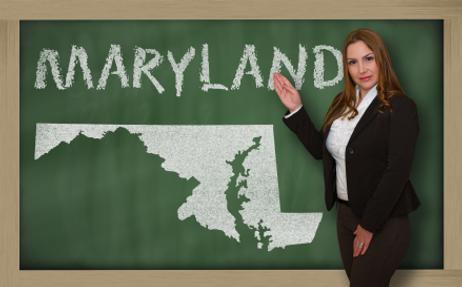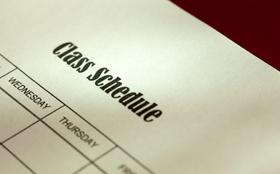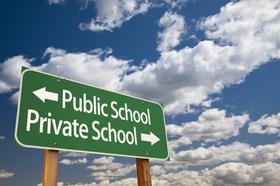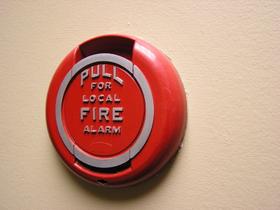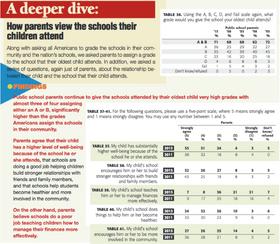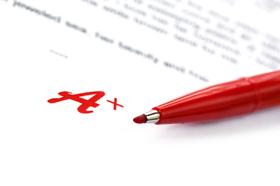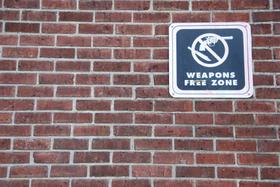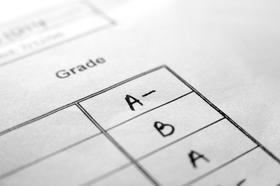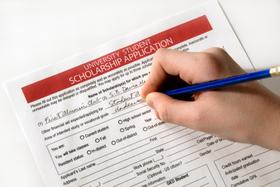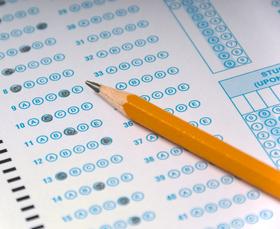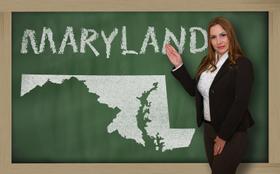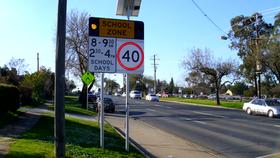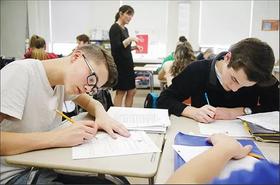While finals week may still be a long way off for most of the schools across the country, report cards are out for Education Week’s annual assessment of the nation’s schools state by state. For the fourth straight year, Maryland has claimed the top spot in the publication’s yearly ranking of school systems. However, with a top grade of B+, it is apparent that most of the country’s school districts still have a long way to go when it comes to providing the highest possible education to their students.
This video explains Education Week’s annual Quality Counts report card ranks state school systems based on everything from academics and funding to socioeconomic factors that can affect student success in school and later in life.
Quality Counts
Quality Counts is the name given to the most comprehensive assessment of the nation’s schools conducted by Education Week every year. According to Education Week’s website, the rigorous evaluation process provides an in-depth look at the state of public schools across the United States today. In light of the recent recession that resulted in big cuts in education spending for many states, as well as efforts by states to put the education pieces back in order during the slow economic recovery, this assessment becomes even more relevant in providing a snapshot of where the quality of education is heading.
“If the turbulence and waves of hardship brought by the recession have taught us anything, it’s that America will sink or swim in a global economy based on its success educating all of its citizens, not just a privileged few, to high standards,” Christopher B. Swanson, the vice president of Editorial Projects in Education, the non-profit that oversees Education Week, stated in a press release on Education Week’s website. “If we are going to continue advancing as a nation, then strong, sustained and equitable educational improvement must become the norm for students in every state, rather than the exception that it is today.”
Swanson is undoubtedly referring to the low scores achieved by most states on this year’s report card, with no schools scoring a grade of an “A” and the large majority scoring in the “C” range. Even those states with better overall grades showed plenty of room for improvement in specific areas of the annual assessment, including Maryland and other top performers.
How Grades were Assessed
The grade card by Education Week focused on the following key factors:
- Student Achievement
- A Student’s Potential for Success
- School Finances
- State Assessments and Standards
- Teacher and School Accountability
Based on these criteria, the top scorers in the nation are Maryland, Massachusetts, New York, Virginia, and Arizona. Those at the bottom of the pack included South Dakota, Nebraska and Washington D.C.
One of the components of the evaluation, student achievement, actually takes 18 individual indicators into account. These indicators include current achievement, improvements over time, and poverty-based gaps that must be overcome. Through these indicators, Education Week is able to piece a full picture of the current state of student achievement, as well as areas in which states can improve. Although Maryland was the top scorer overall, other states showed marked achievement in specific criteria, passing the winning state, although other factors might have left much to be desired.
Maryland’s Streak as Top State
A local report at the Washington Post states that Maryland is enjoying its fourth consecutive year in the top spot on the Education Week report card. This year, the state received an overall grade of “B+” by Education Week, with particularly high grades in the areas of Student Chance for Success, Standards and Assessments, School Finance and Transitions and Alignment. The state has demonstrated strengths in preparing students for primary grades through an effective early education program, as well as getting students ready for college after high school.
“Maryland is an example of an all-around strong performer,” Swanson told the Washington Post.
Bernard Sadusky, the interim state superintendent for Maryland schools, said that the high marks were an accolade for the teachers and local superintendents. Sadusky added that the state government’s commitment to education also provided the resources necessary to help schools succeed. However, Maryland still has work to do in the area of racial and socioeconomic disparities, Sadusky admitted. John Smeallie, deputy state superintendent agreed.
“We have to remember, we’re not done,” Smealllie told CBS Baltimore. “There are still areas we need to work. And we will continue to work to eliminate the achievement gap to make sure every student succeeds, regardless of where he or she lives.”
To that end, the state wants to improve test scores across the board, but particularly with low-income and minority students. In this year’s assessment, the state received a “C-“ in the area of K-12 Achievement Equity.
On the other hand, early childhood development was another factor that catapulted Maryland to the top of Education Week’s marks. The state received an “A” (100%) on early childhood development in Education Week’s assessment.
“We’re getting our kids ready for the future, and that starts early with 4- and 5-year-olds,” Jennifer Kirby, a pre-K teacher at Cedarmere Elementary, told CBS Baltimore.
This video demonstrates that in many measures, including National Education Assessment Progress (NAEP), which comprise a top ranking, in this case, schools in Idaho.
While Maryland is celebrating its high ranking, those marks may still not be good enough to ensure American students are prepared to compete in the global market. When it came to the overall scores on the National Assessment of Education Progress, Maryland ranked seventh on reading scores and 13th for math scores. However, that translates to just 40 percent of eighth graders achieving a proficiency score or higher. In math, just under half of all students scored at proficient or higher in the state. The work is not finished yet.
Questions? Contact us on Facebook. @publicschoolreview

